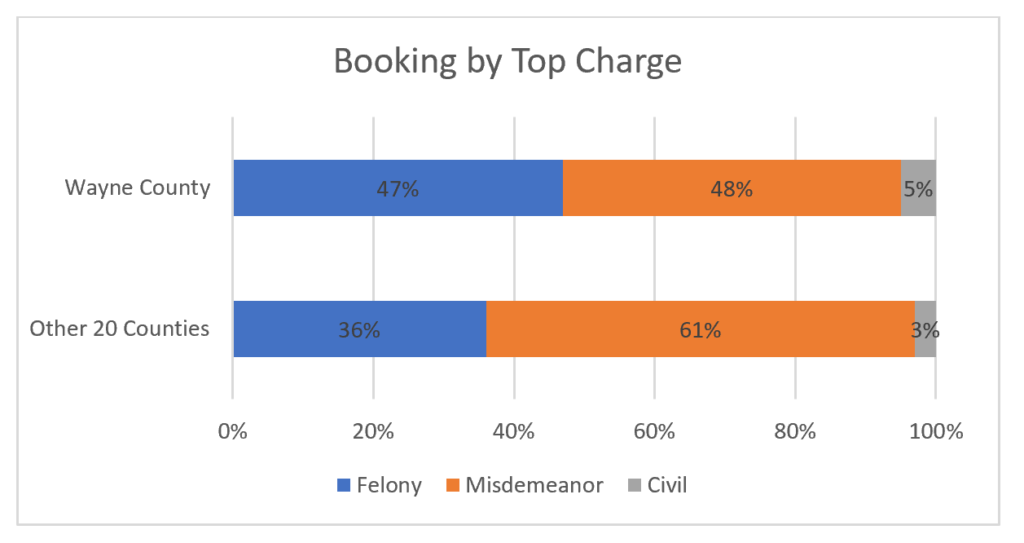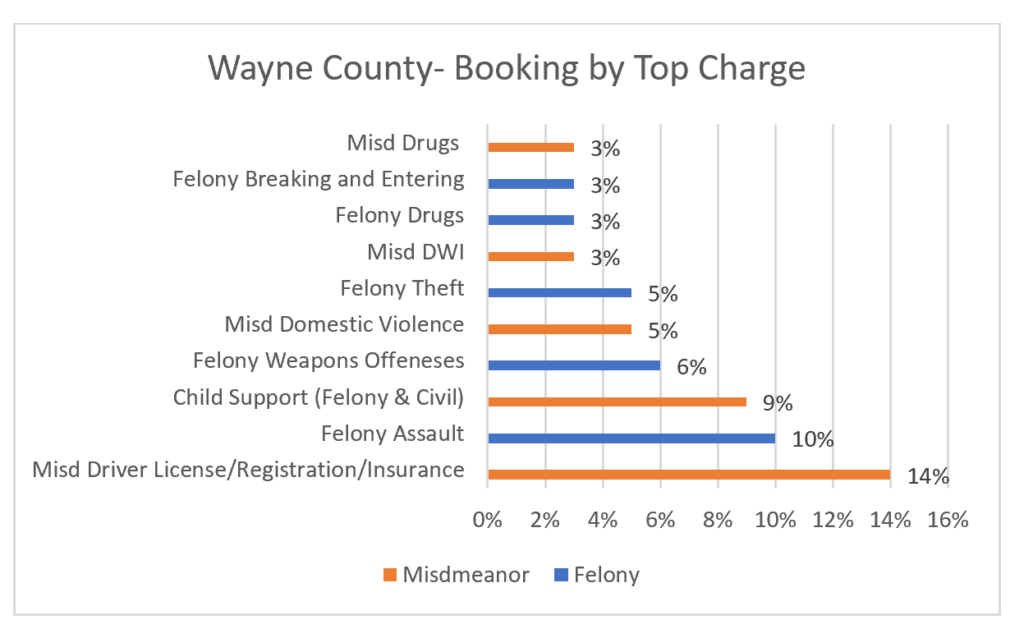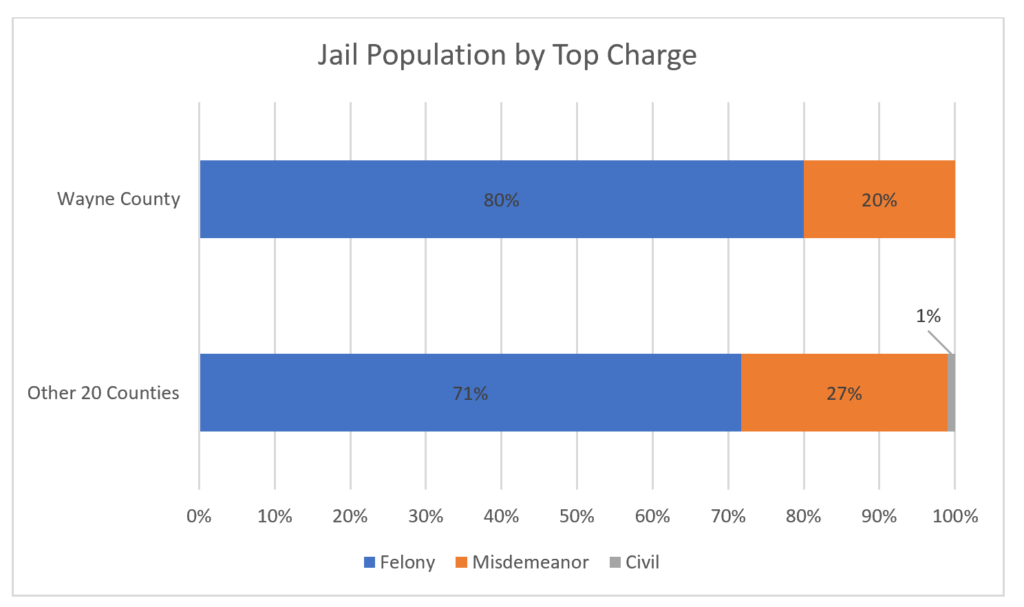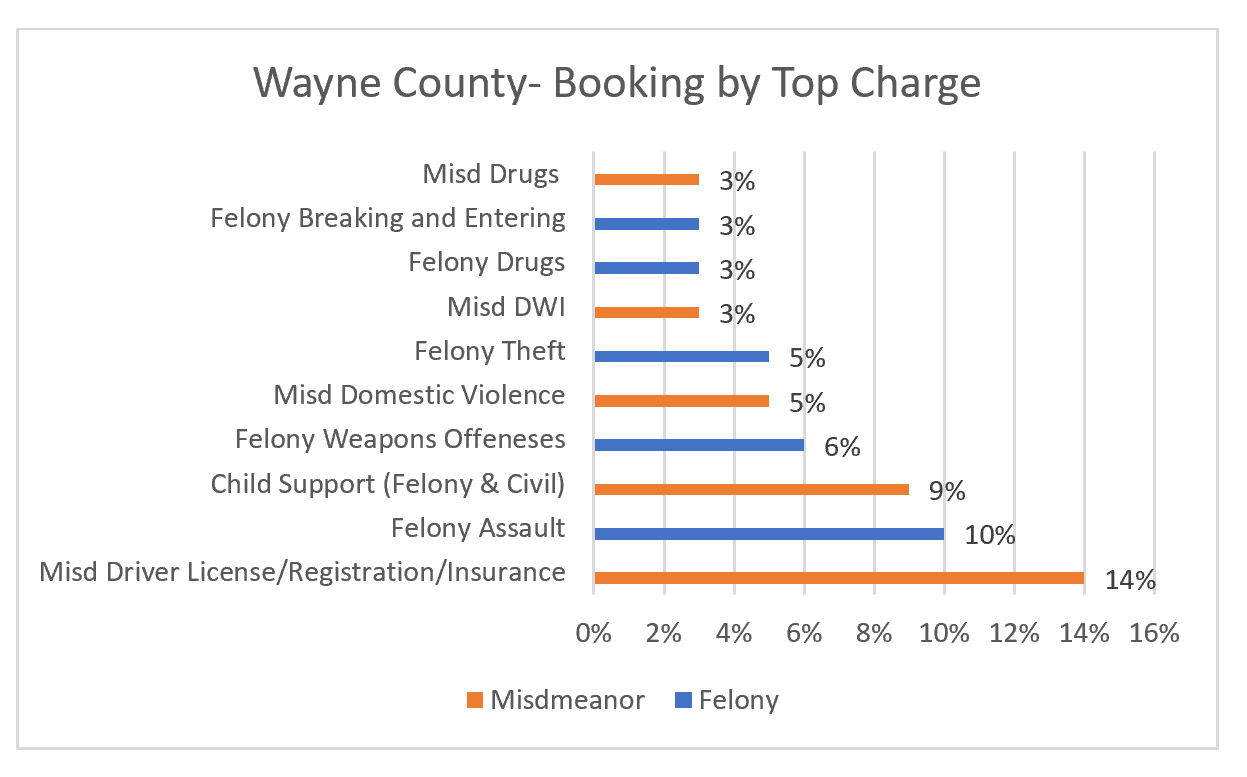This blog is the first in a series of three comparing the results of the Wayne County Jail report and the findings of the Joint Task Force. This blog focuses on what offenses people booked into jail for.
In May 2020, the Vera Institute of Justice released a report on the practices of the Wayne County jail, only months after the Michigan Joint Task Force on Jail and Pretrial Incarceration released their report. The opportunity to compare findings of reports focused on similar issues, in a similar time and completed by national organizations are unique. Jail data is often difficult to access, and analysis into jail populations in Michigan has been long overdue.
The Joint Task Force analysis into Michigan’s jail population included 20 different counties. However, Wayne County was not included in the analyses. It is often suggested that the way that Wayne County utilizes the criminal justice system is different than the rest of the state, but several similarities found between the two reports further support the recommendations made by the Joint Task Force.
Vera utilized data from the Wayne County Sheriff’s Office on all people who had been held in the Wayne County Jail from the beginning of July 2018 to the end of June 2019. The analysis conducted for the Joint Task Force were done by Pew charitable trust, using data from 2016 to 2018. Both sets of analyses examined who is incarcerated in local jails and for how long. These findings were the basis of the recommendations both organizations ended up suggesting.
Who is incarcerated in Wayne County and Michigan Jails?
Analyses of the Wayne County Jail data on bookings and the average daily population (ADP) reveal the many similarities to the findings of the Joint Task Force. Looking at the bookings into Wayne County Jail, 53 percent are for relatively minor offenses such as misdemeanors, and civil infractions. This is similar to the findings of the Joint Task Force that 64 percent are for relatively minor offenses. The percent of local ordinances are included in the misdemeanor category, as most local ordinances are considered misdemeanors. Across these findings, more than half of the time when someone is being booked into jail, it is for a misdemeanor offense. Further, in Wayne County, half of the 10 most frequent booking charges are considered misdemeanor offenses.

Many of the same offenses appear in the graph (Booking by Top Charge) and in the analysis of the 20 Michigan counties, however, due to differences in offense groupings, direct comparison is not possible. For example, below drug offenses are separated by misdemeanor and felony totaling 8 percent of bookings; in the analysis, the 20 counties drug offenses are separated by possession and manufacturing, not by severity, and comprise 12 percent of bookings. In both sets of analyses offenses related to the suspension of licenses, registration and insurance were a top offense, comprising 14 percent of bookings in Wayne County, and 9 percent in the other 20 counties. However, in addition to these, both lists include theft, assault, domestic violence, and driving/operating under the influence.

While these findings are important, they are only part of the story. Due to the nature of jails, there is a great amount of churn, some people stay a few hours or days, while others stay for months.
Since felony offenses carry more serious consequences, people with these charges are usually in jail for longer and make up a larger proportion of the average daily population (ADP). In Wayne County, those charged with a felony comprised 80 percent of those incarcerated. Similarly, the sample of 20 other counties also found that the majority of the ADP was held on felony charges.
To understand the difference in who is booked into jail and who comprises the jail population the length of stay must be examined. The two reports examined this issue differently, with the Wayne County research focused on specific offenses, while the task force report consolidated offenses into felony and misdemeanors. Despite the differences in approach, the results are similar; those charged with a misdemeanor as their top offense had much shorter average stays in jail than those who had a felony as their top charge.

The increased availability of aggregate data regarding jail populations was a recommendation made by both reports. Knowing who is incarcerated in Michigan jails, why they are there, and for how long is an important foundation for understanding the recommendations made. The following blogs in this series will build on the data explained here to ground the further discussion of the proposed recommendations.
Safe & Just Michigan supports all the recommendations made by the Joint Task Force. For more information on the recommendations of the Joint Task Force, please see our blogs (and here) explaining the recommendations, and our webinars with experts regarding the recommendations for decriminalization and addressing the suspension of driver’s license.

